Behind the Shelves
Meet Rechyl Weg, Curator of the New JCCMP Family Library
Facilitated by Rayle Rubenstein

As a kid, I always loved reading. Every time I went to someone’s house, I went straight to their bookshelves. I still remember my first chapter book: The Baker’s Dozen. I read it during a bout of chicken pox when I was about six or seven years old.
My friends from high school recently reminded me that I told them years ago that someday I’d open a library. I didn’t actually expect that to happen. After I graduated high school, I studied in a seminary for two years. My first job was at a graphic design firm, and I also taught art part-time. After volunteering for an organization, I got a job at their library. I began working at the desk, checking books in and out. Not long after starting, some staff left and I ended up having to learn how to do cataloging. I loved it! I was gradually promoted from desk librarian to head librarian. I became responsible for maintaining the library, cataloging, book ordering, and all the intricacies that go into running a library.
I’ve been with the JCC Library for about two years now.
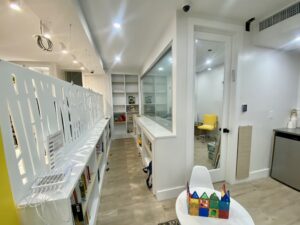
By the time I stepped in, books had been ordered, and the general system had already been decided on. We use what’s called the Elazar cataloging system, which shares a similar concept with the Dewey decimal system, widely used in public libraries, but is specifically designed for Jewish books and tailored to Judaic libraries.
We began with 1250 titles. Every book in the library receives a unique barcode that makes it trackable so we can loan it out and keep track of its condition. Once we’ve created the code, we need to enter that book into the system. Whenever possible, we pull records from elsewhere. The beauty of the internet and modern technology: I use things like the Library of Congress, the Harvard library, and other Jewish libraries that use our software. Every book is entered into the system with a summary in addition to the title, author, publication date, and publisher. Once that’s all done, every book gets labeled by genre.
One of the biggest questions when setting up a library is how to organize it. Our goal is to make our circulation accessible for your average reader. The first step is to organize by age, the basic idea being adults, young adults, children, and early readers. The number labels on the book’s spine indicate the exact placement of the book on its shelf, but I added a second label to each book after we opened the library to make it easier for people to find what they’re looking for. For the young adult books, this means genre labels like “mystery” or “action.” Kids’ books get color-coded labels, so if, for example, a child is looking for something specific I can tell him, “Go to the green books.”
Our last step before putting them into circulation is to stamp the books with the library’s phone number and address.
I would estimate that around 300 hours were invested in transforming books and boxes into a functional library.
In addition to keeping the library operational, we intend on being up to date in the literary world by constantly ordering new books as they are released. We have been receiving some really generous donations of books and sefarim as well, and those are an important and very welcoming element to being part of a community library. There’s a lot of behind-the-scenes work that needs to take place in order for us to stay current. We are always communicating with publishing houses to hear about what’s coming out, making sure to order the new books, and then quickly entering them into our system.
To keep me informed in the ever-evolving library landscape, I read articles, attend conferences, and join webinars. I stay in touch with other librarians. Exploring new approaches and learning from my mistakes are integral parts of this journey.
Every day is different here at the library. There are times when things are hard, but it’s a very meaningful job, and I feel like I’m making a difference. There are also a lot of perks to working in a job like this. For example, I get to see new releases before they hit the shelves, and I get to read books during my down time. Being a librarian is like putting together a puzzle. I love using the cataloging system. I enjoy the process of taking books that are a mess and working through it, turning them into a system that people can use. I enjoy solving problems and helping readers access information. But what I love most is interacting with our visitors and watching them experience the magic of a library.
Yesterday, someone at the library asked me if I teach. I said, “This is my classroom.” I love helping kids find books and watching their mothers connect. Seeing it all come together is amazing.

One of the things that always speaks to me about libraries is that they’re starting points for so many things. Learning and exploring are integral aspects, but there’s also an element that people don’t often think about, which is the community aspect. The library is a neutral place where we can all go to mingle and enjoy. We can be from different schools and backgrounds, and we don’t always get the chance to interact, especially in a place like Brooklyn, where there’s so much going on. But in the library, you can meet people and build connections. I love watching that happen, whether it’s kids getting to know other kids or mothers getting to sit for five minutes and chat.
Libraries are kind of like mechanical gears with a bunch of tiny moving parts. When they are in sync, they work beautifully.
I’m looking forward to seeing where this journey takes us. I feel like in five years, everyone’s going to look back and say, “Wow, look at where this all started!”
Rechyl’s Advice for Fostering a Love of Reading
I always loved being able to explore subjects that interested me, and I think that’s the key to developing a love of reading. It’s fascinating to walk into a space filled with books that cover a wide range of topics and aspects and choose those that pique your curiosity. That’s why I put a lot of emphasis on genre labels. Whenever someone asks for a book recommendation, the first thing I ask is, “Can you tell me about a book you’ve really enjoyed? What did you like about it?” Or I’ll ask them to tell me about a book they didn’t love so much because that helps me understand what they prefer in a book. I think that’s a good place to start.
If a kid doesn’t love reading, don’t make it solely about the reading. Make it about what they’re learning, about their curiosity, and the vast access to so many things that books provide. What they’re curious about will serve as a gateway.
“We have been receiving some really nice donations of books, and those are an important and very welcome part of the library.”
“What I love most is interacting with our visitors and watching them experience the magic of a library.”
A Few of Our Favorite Reads
Books Rechyl’s Been Enjoying at the JCCMP Family Library
Who is Like Your People?
A Historical Novel by Henye Meyer
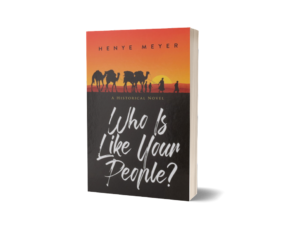
Menucha Publishers
Ideal for ages 13 and up
One of my all-time favorites has been The Exiles of Crocodile island. When I saw that Henye Meyer had a new historical novel, I was excited to read it, and it did not disappoint. Like the Exiles of Crocodile Island, this book is built on a firsthand account written during the era of the Crusades and preserved in the Cairo Geniza. It’s the story of a man named Ovadia and his journey to becoming a ger and finding a community far away from the life he had left.
Aside from the historical details, the book really covers a few genres. In her typical style, Meyer weaves a tale that is thought provoking and adventurous. At times there is even a touch of humor. I’d describe it as insightful, meaningful, and exciting.
Rule of Three
By Esther Kurtz
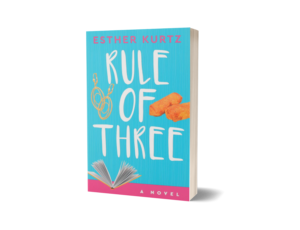
Menucha Publishers
Ideal for ages 16 and up
If you’re looking for a good yom tov read, this is your book. It’s the story of three women, at three different stages, whose paths intertwine as they develop friendships amid the background of real life. The author tells each part of the story from a different perspective. Starting with Abby, the introverted successful artist, she moves on to Shiffra, who is used to being the successful accomplished single friend and finds herself learning to adjust to a new marriage. The story continues with Chana, who spent many years comfortable in her role as the mother of a growing family before accepting the role of shul rebbetzin, a position she struggles with at times.
There is enough real life in this book to make it relatable, and the storyline is light enough to make it a fun read. The author did a great job writing a novel about frum women in a style that is unique enough to make it memorable.
One Special Prayer
By Yaakov Meir Strauss
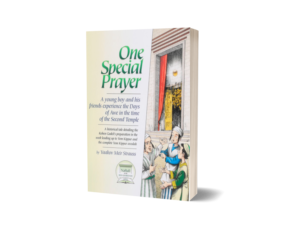
Feldheim Publishers
Ideal for ages 10 and up
Many years ago, a friend introduced me to this treasure when we were in discussion about the occasional tedium we feel during the seder avodah on Yom Kippur. It’s the story of Naftali, a young boy who lives during the times of the second beis Hamikdosh, who gets to spend Yom Kippur in Yerushalayim with a friend whose father is the Kohen Gadol. The author weaves an exciting and dramatic story that includes true details about what Yom Kippur was like in the Bais Hamikdosh.
As an adult, I appreciate this book for the perspective it gave me. I still think about the image of reverent beauty that comes across with new appreciation for the Yom Tov of Yom Kippur.
This book is part of a larger series, following a volume titled Naftali in the beis hamikdosh, which can be found in our Young adult section.
From My Heart
By Esti Perman
Hachai Publishing
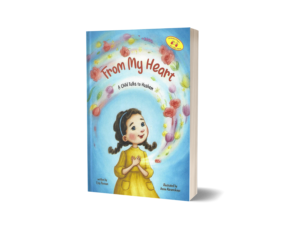
Ideal for ages 3 to 6
A good teacher can give over an idea in simple language without losing its authenticity.
Some of the best children’s books are messages that we can all appreciate. This book is about tefillah from the perspective of a child. It’s warm, friendly, and gentle and introduces the idea of talking to Hashem in such a beautiful way. It was a good reminder to the adult me about why I daven.
You must be logged in to post a comment.